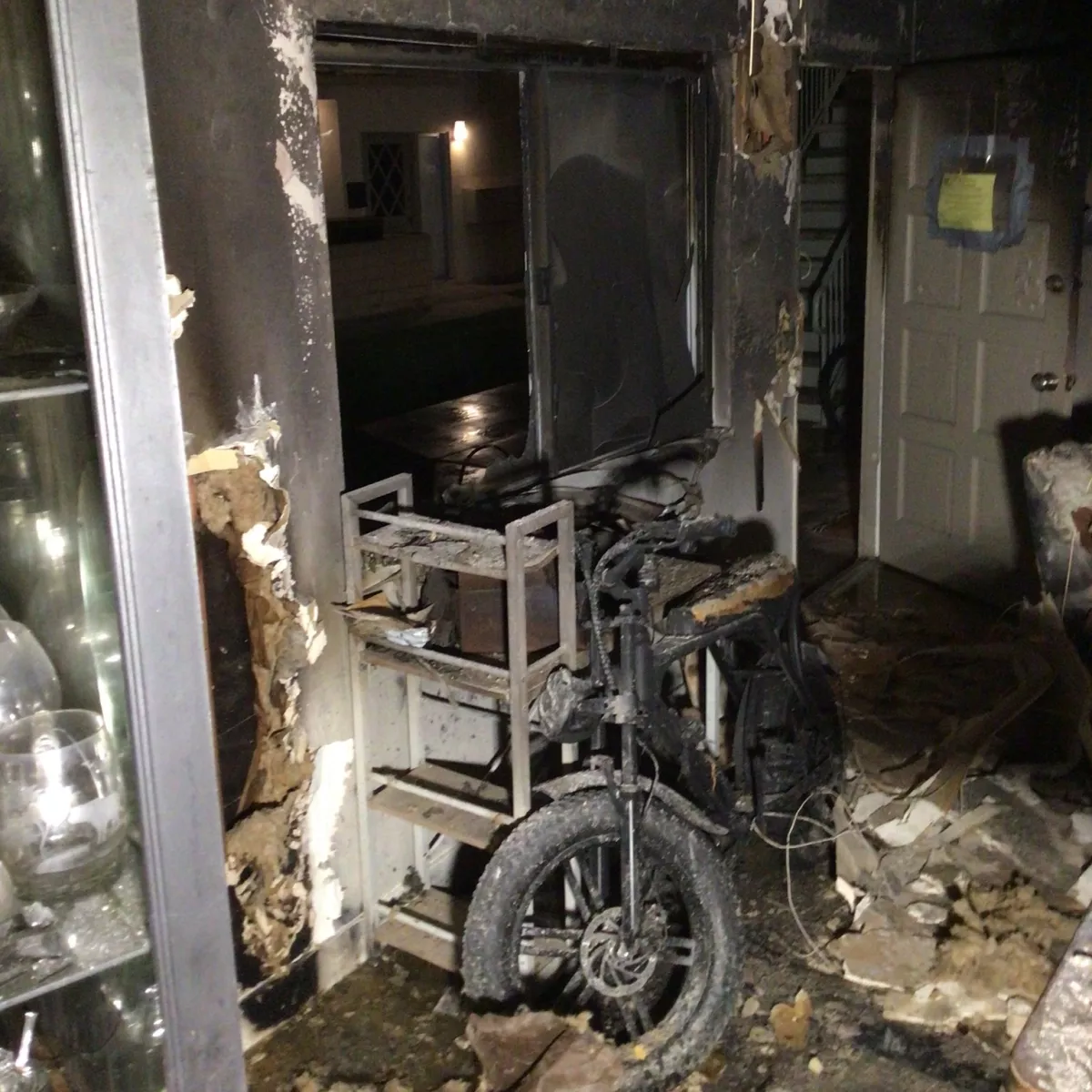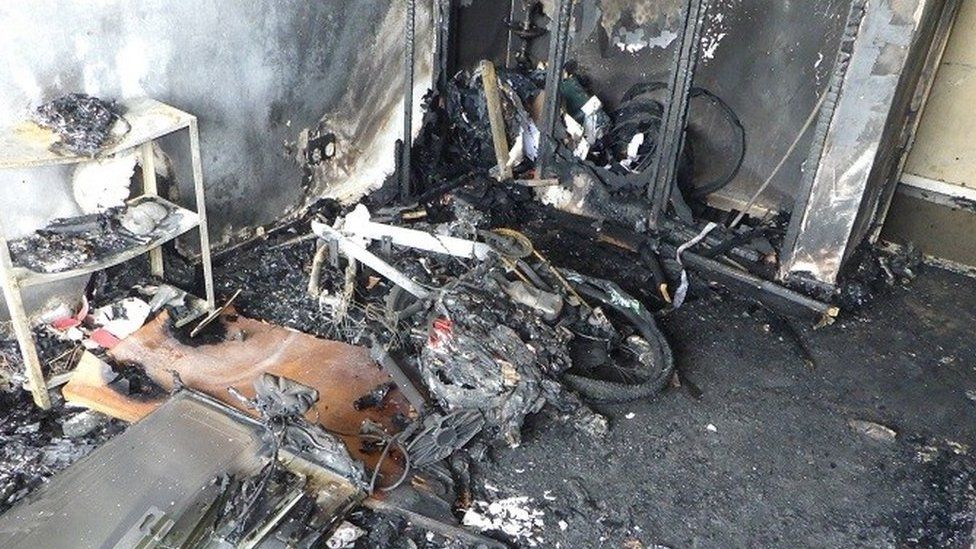Almost all modern electric bikes run on lithium-ion batteries. These batteries are found in many of our electronics, such as phones, laptops, and other e-vehicles.
Unfortunately, while this technology has numerous benefits, allowing a lot of energy to be stored in a small unit, it also brings a higher risk of fire if not handled appropriately.
Many high-profile e-bike battery fires have occurred in the past year or two, leading to the deaths of several people and injuries to many more.
Due to these incidents, there has been increased awareness about the dangers of lithium-ion batteries when mishandled or poorly made.
As a result, regulators are now pushing to implement laws that ban the sale of dangerous batteries and provide safe charging stations for owners.
This article will outline how e-bike fires start and what you can do to prevent them so you can stay safe and continue to enjoy your electric bike.
Why Are E-Bike Fires Becoming More Frequent?
An explosion in the use of electric bikes over the past few years, especially in major cities, has led to many people trying to find cheap alternatives to buying, repairing, or tampering with the bike’s electronics.
Likewise, with more people using the technology, the sheer amount of these products in circulation will inevitably lead to more e-bike battery fires from mishandling.
What Is Causing E-Bike Battery Fires?
Lithium-ion batteries store lots of energy and are made up of highly flammable chemicals. Check out our complete guide on ebike batteries to learn how they work.
If the battery is damaged or overheats, the energy in the battery can ignite and cause a fast and aggressive fire that is hard to control. In addition, the chemicals that ignite in these batteries cannot be extinguished with water.
Most fatal fires occur when the battery is charging and unattended. There are several reasons that these fires occur. Thankfully, once you know what they are, you can take the appropriate steps to avoid them.
One of the most common causes of e-bike battery fires is overheating. This can occur if the battery is left to charge near a heat source or in direct sunlight.
If this happens indoors and the battery is beside other flammable materials, a severe and often lethal fire can spread rapidly through the building.
If a battery is damaged through an accident or after being dropped, the energy inside may become more volatile, increasing susceptibility to an e-bike fire if the battery gets even slightly too hot.
Off-brand batteries without certification by independent sources or subject to strict quality control are more likely to catch fire.
Likewise, charging your existing battery with a cheap replacement charger or the wrong brand can cause fires.
Tampering can also lead to electric bike fires. This includes penetrating the plastic case, taking it apart, or trying to modify the battery in any way.
How to Prevent E-Bike Battery Fires?
Again, preventing electric bike fires is possible if you follow care guidelines and best practices established by the manufacturer and regulators.
1. Charge the Battery Only When You’re Present
Most deadly e-bike battery fires occur when a battery is left to charge unattended. For example, leaving it overnight while you’re sleeping or stepping out of the home and leaving it plugged in.

Source: Huntington Beach Police Department
These fires spread quickly, so every second is essential to controlling them.
Only charge your battery when you’re present, ideally in the same room.
2. Use the Charger That Comes with Your E-Bike
Don’t use any third-party chargers or chargers of different electric bikes. If yours breaks, buy a replacement from the bike manufacturer or the e-bike system manufacturer directly. Double-check it’s the appropriate one before buying.

Source: London Fire Brigade
3. Charge the Battery Away from Flammable Materials
When you leave the battery to charge, place it away from flammable materials and objects that will ignite rapidly in the event of an e-bike fire.
For example, don’t charge it on the carpet, beside the couch, or on a desk full of papers or books.
4. Choose the Charging Location Carefully
Place your electric bike and charge your battery in an area away from exits so that you can quickly evacuate if an e-bike battery fire starts and you can’t control it with an extinguisher.
Never charge your ebike in a place that is located between you and the exit.
5. Look for Batteries That Have UL (Underwriter Laboratories) Certification
Quality control and certification are important for batteries as they guarantee a level of care in construction and design that means a lower likelihood of an e-bike fire (once you handle the battery appropriately).
Cheap off-label batteries typically don’t have these certifications or high levels of quality control.
6. Assess Your Battery After a Crash
The internal cells of a battery can become damaged in the event of a crash. This damage isn’t always obvious by looking at the exterior.
Give the battery a thorough examination if you crash your e-bike, and err on the side of caution by replacing it if there is any notable damage, as it could significantly increase the chance of an e-bike battery fire.
7. Don’t Use Off-Brand Replacement Batteries and Chargers
Again, off-brand replacements not explicitly designed for your e-bike are among the most common causes of e-bike battery fires.
Electric bike fires are uncommon in systems made by reputable manufacturers such as Bosch and Shimano, as quality control is extremely high.
Always replace old or broken components with those from the same manufacturer.
8. Charge in Fireproof Containers
A trick to minimize the chance of e-bike battery fires spreading if a battery does ignite is to charge and store it in a fireproof container or area. Examples include a BBQ grill, fire pit, ammunition box, fire blanket, metal trash can, or clay pot.
Related Topics
How Long Does an E-Bike Battery Last?
Electric Bike Range: How Far Can an E-Bike Really Go?
Electric Bike Safety: 10 Tips to Stay Safe on Your E-Bike

Your Feedback is Important!